Suppression of Cross-Coupling Effect of Hybrid Permanent Magnet Synchronous Motor with Parallel Magnetic Circuit
Abstract
:1. Introduction
2. Motor Topology
3. Analysis of Equivalent Magnetic Circuit and Magnetic Modulation
3.1. Equivalent Magnetic Circuit Model
3.2. Principle of Parallel Magnetic Circuit Magnetic Adjustment
4. Methods to Reduce the Cross-Coupling Effect
4.1. Lengthening the Magnetic Barrier between Two Kinds of Permanent Magnets
4.2. Setting the Excitation Coil Close to the Low-Coercive Permanent Magnet
5. Electromagnetic Analysis and Verification
5.1. Lengthened Magnetic Barrier
5.1.1. No-Load Analysis
5.1.2. Load Analysis
5.2. Adding the Excitation Winding
5.2.1. No-Load Analysis
5.2.2. Load Analysis
6. Conclusions and Shortcomings
- (1)
- When setting the magnetic barrier, the original magnetic circuit and the magnetic barrier of the high-coercive permanent magnet should be avoided.
- (2)
- Since the excitation winding is placed on the rotor, it must be equipped with a commutation device. Moreover, the additional loss and heat dissipation of the winding must be considered.
- (3)
- The two methods inevitably lead to the complex structure of the motor, which is not easy to process.
Author Contributions
Funding
Institutional Review Board Statement
Informed Consent Statement
Data Availability Statement
Conflicts of Interest
References
- Renyuan, T. Theory and Design of Modern Permanent Magnet Motor; Machine Industry Press: Shenyang, China, 2016. [Google Scholar]
- Ostovic, V. Memory Motors—A New Class of Controllable Flux PM Machines for a True Wide Speed Operation. In Proceedings of the 36th Industry Applications Conference, Chicago, IL, USA, 30 September–4 October 2021; IEEE: Piscataway, NJ, USA, 2001. [Google Scholar]
- Limsuwan, N.; Kato, T.; Akatsu, K.; Lorenz, R.D. Design and Evaluation of a Variable-Flux Flux-Intensifying Interior Permanent-Magnet Machine. IEEE Trans. Ind. Appl. 2015, 50, 1015–1024. [Google Scholar] [CrossRef]
- Jianzhong, S.; Fengxian, B. New Concept Permanent Magnet Machine—On the Design of Memory Machine. Large Electr. Mach. Hydraul. Turbine 2004, 3, 9–12. (In Chinese) [Google Scholar]
- Lee, J.H.; Hong, J.P. Permanent Magnet Demagnetization Characteristic Analysis of a Variable Flux Memory Motor Using Coupled Preisach Modeling and FEM. IEEE Trans. Magn. 2008, 44, 1550–1553. [Google Scholar] [CrossRef]
- Sakai, K.; Yuki, K.; Hashiba, Y.; Takahashi, N.; Yasui, K. Principle of the Variable-Magnetic-Force Memory Motor. In Proceedings of the International Conference on Electrical Machines & Systems, Tokyo, Japan, 15–18 November 2009; IEEE: Piscataway, NJ, USA, 2010. [Google Scholar]
- Hui, Y.; Lin, H.; Zhu, Z.Q.; Fang, S.; Huang, Y. Novel Flux-Regulatable Dual-Magnet Vernier Memory Machines for Electric Vehicle Propulsion. IEEE Trans. Appl. Supercond. 2014, 24, 1–5. [Google Scholar]
- Yubin, Z.; Yangsheng, C.; Jianxin, S. Design of a hybrid permanent-magnet memory machine. Trans. China Electrotech. Soc. 2015, 30, 51–60. [Google Scholar]
- Yubin, Z.; Yangsheng, C.; Jianxin, S. Analysis and improvement of a hybrid permanent-magnet memory machine. IEEE Trans. Energy Convers. 2016, 31, 915–923. [Google Scholar]
- Hua, H.; Zhu, Z.Q.; Pride, A.; Deodhar, R.; Sasaki, T. Comparative Study on Variable Flux Memory Machines with Parallel or Series Hybrid Magnets. IEEE Trans. Ind. Appl. 2019, 55, 1408–1419. [Google Scholar] [CrossRef]
- Wu, D.; Zhu, Z.Q.; Sasaki, T.; Liu, X.; Pride, A.; Deodhar, R.; Sasaki, T. Cross Coupling Effect in Hybrid Magnet Memory Motor. In Proceedings of the 7th IET International Conference on Power Electronics, Manchester, UK, 8–10 April 2014; IET: London, UK, 2014. [Google Scholar]


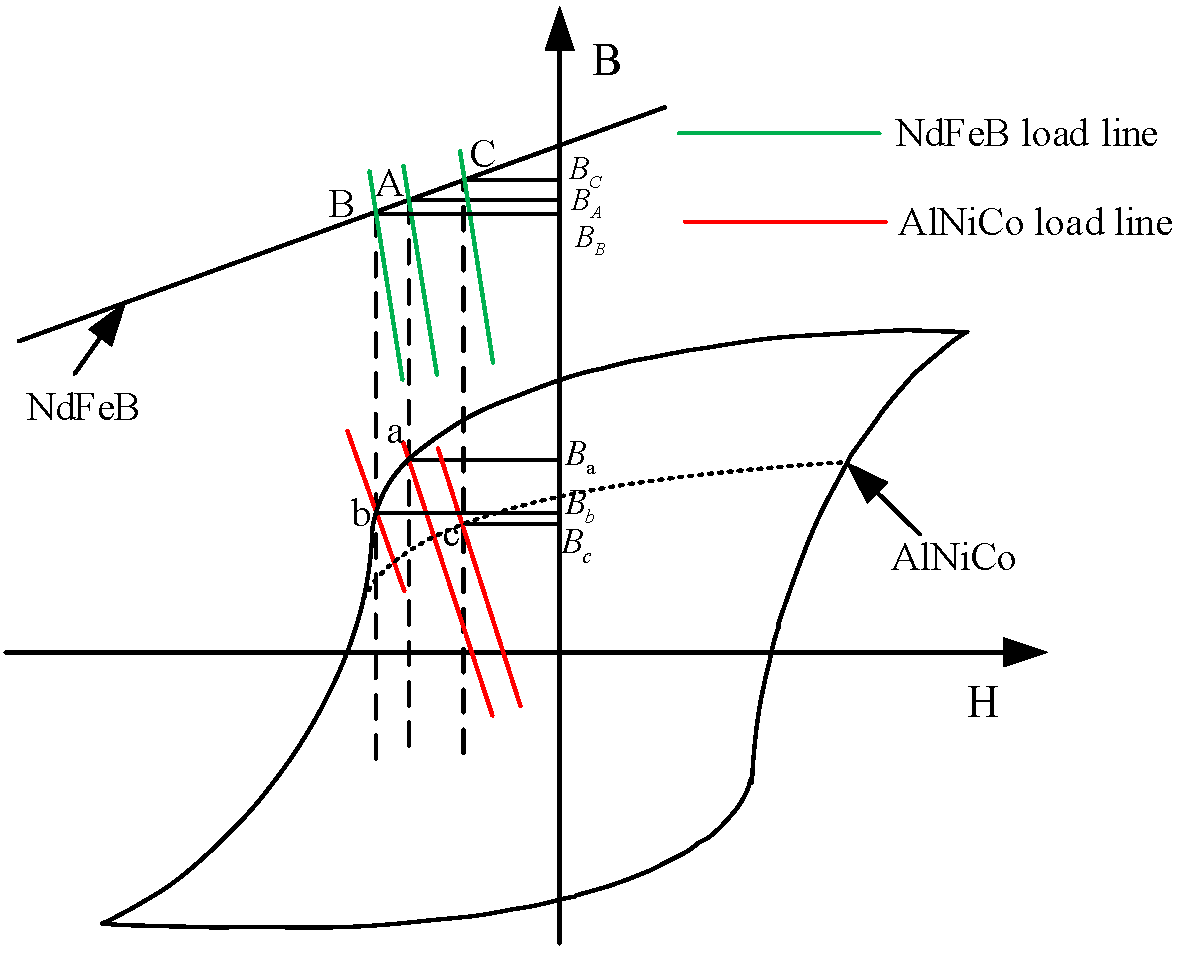
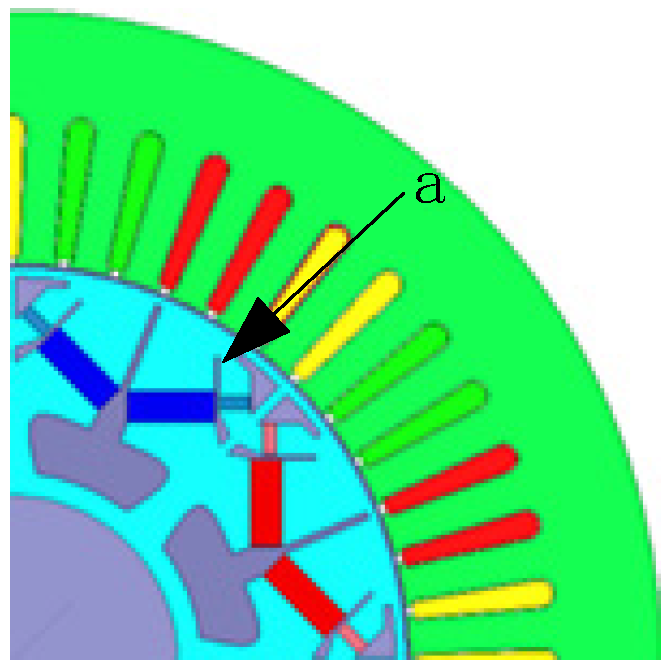
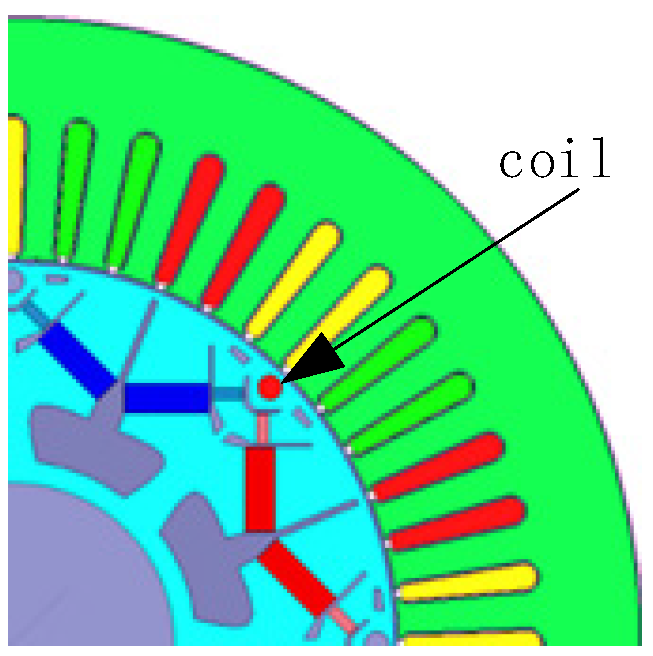


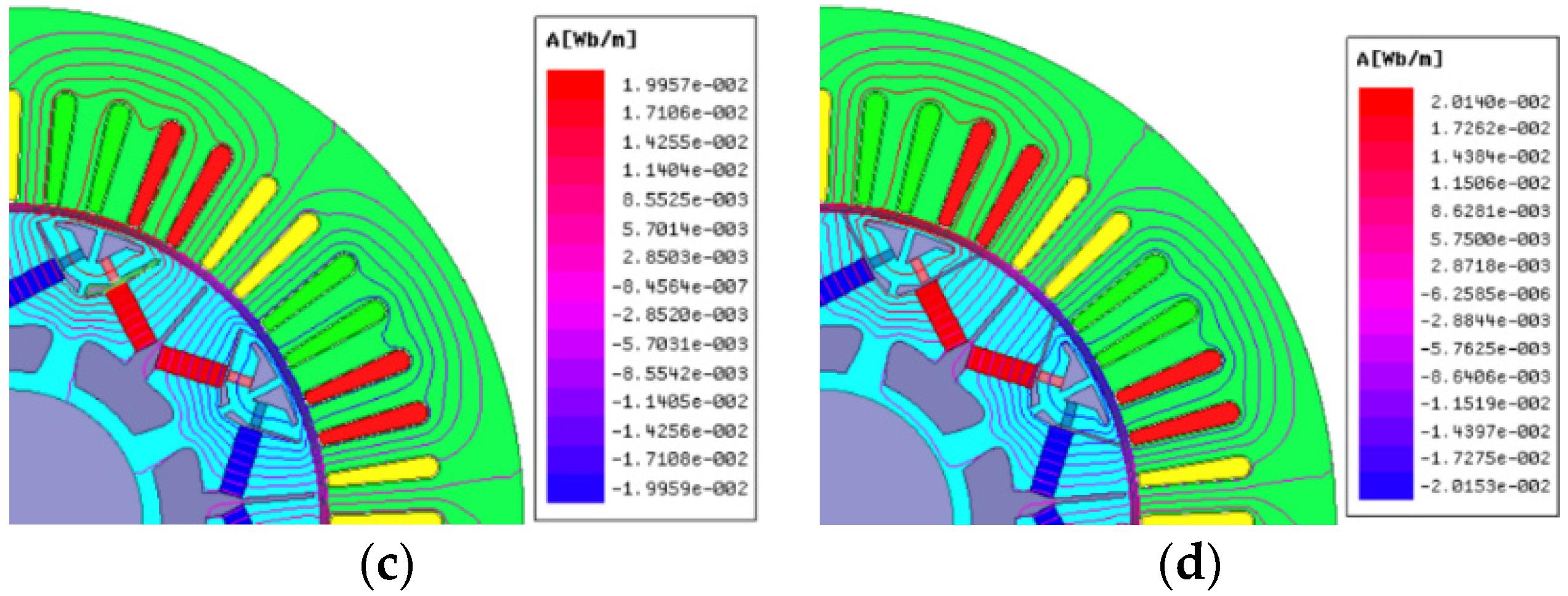
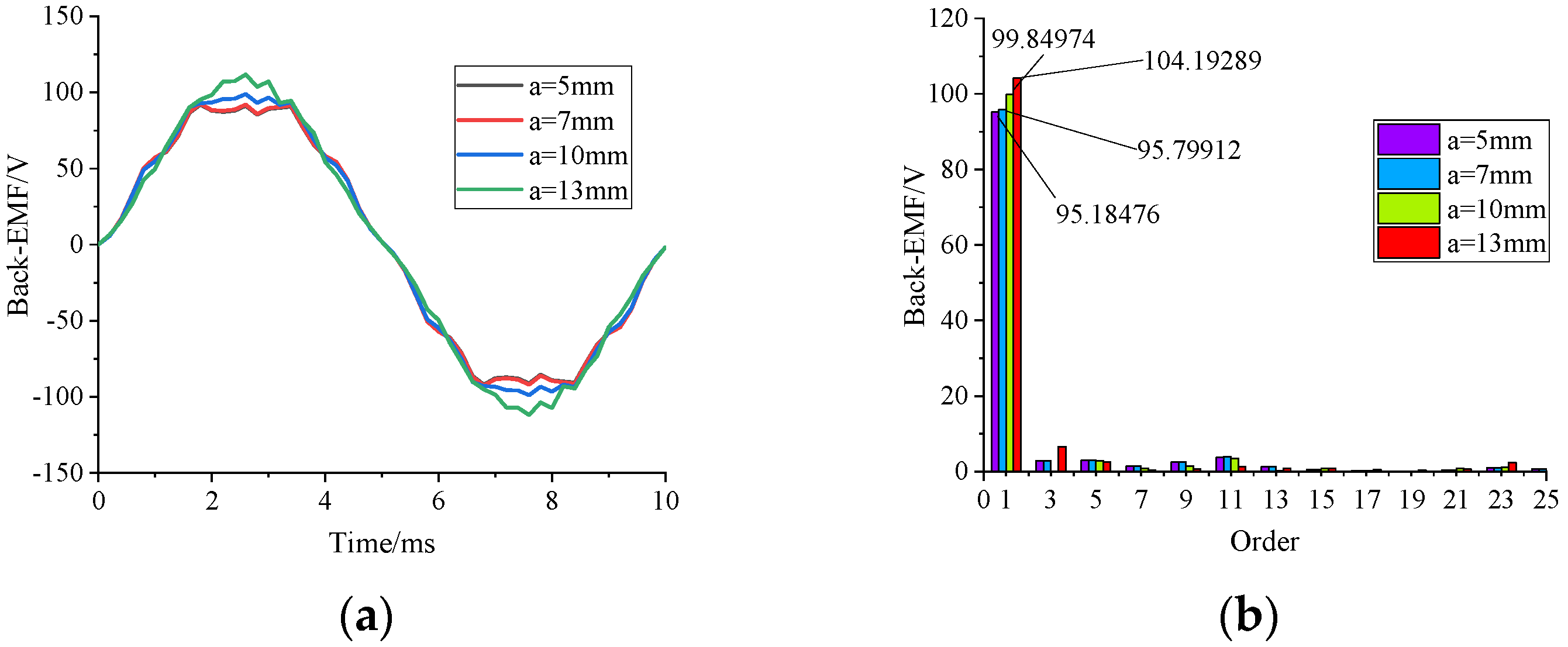
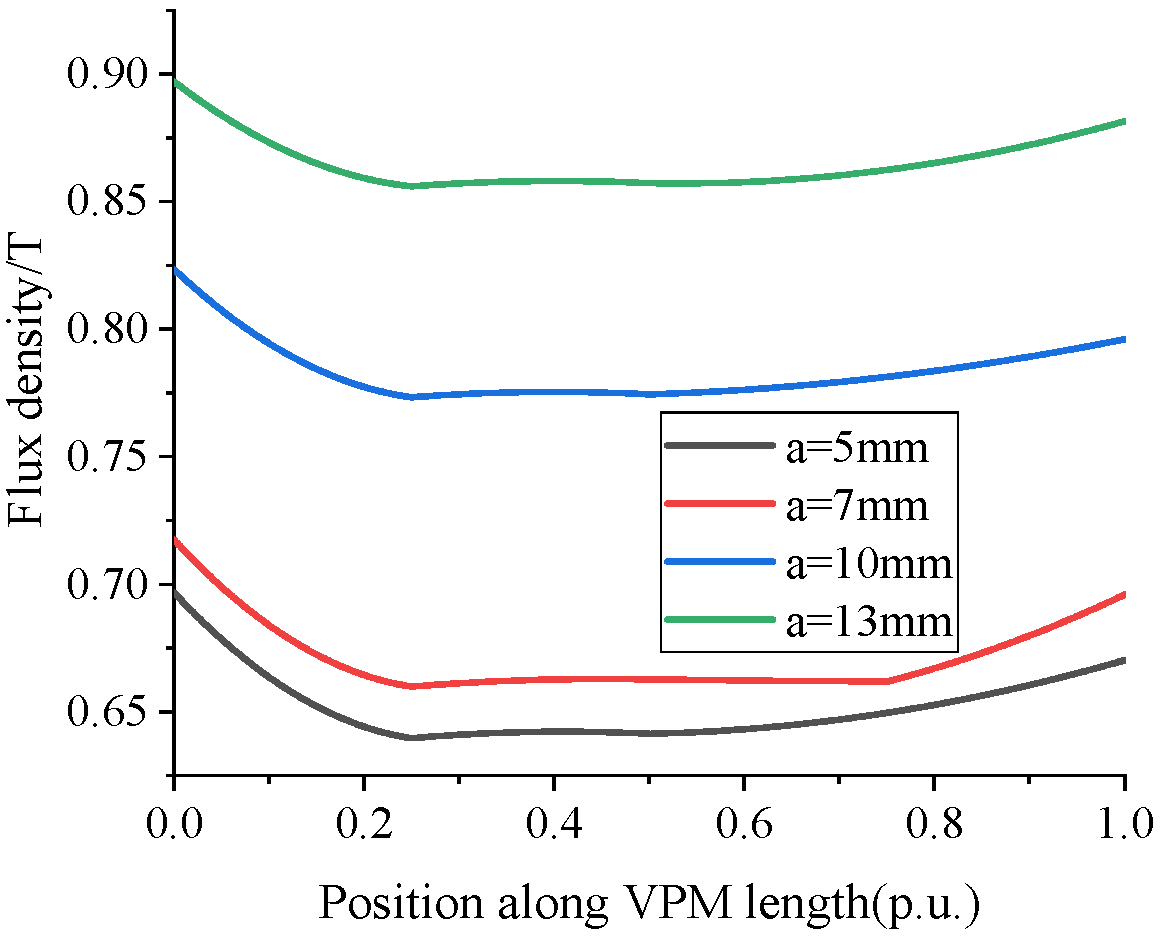

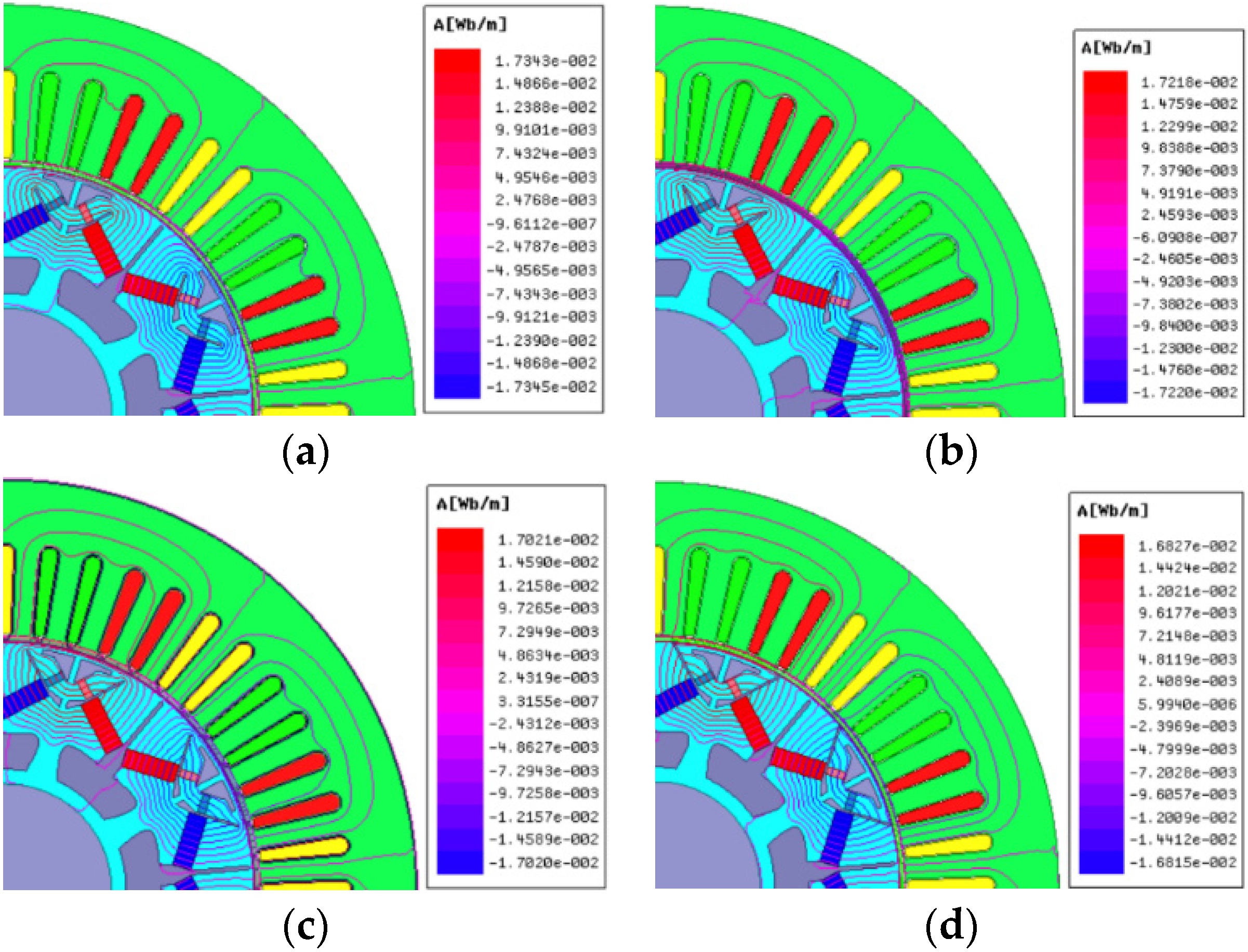
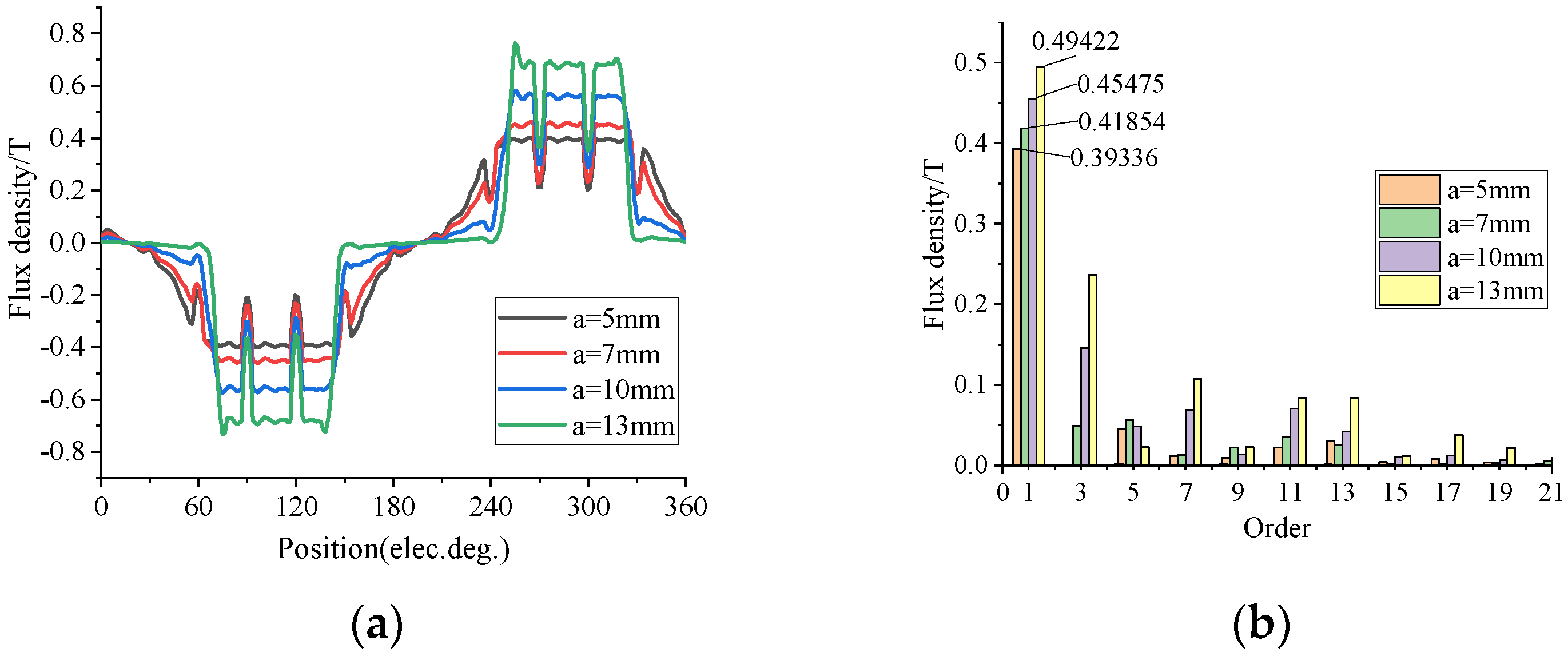
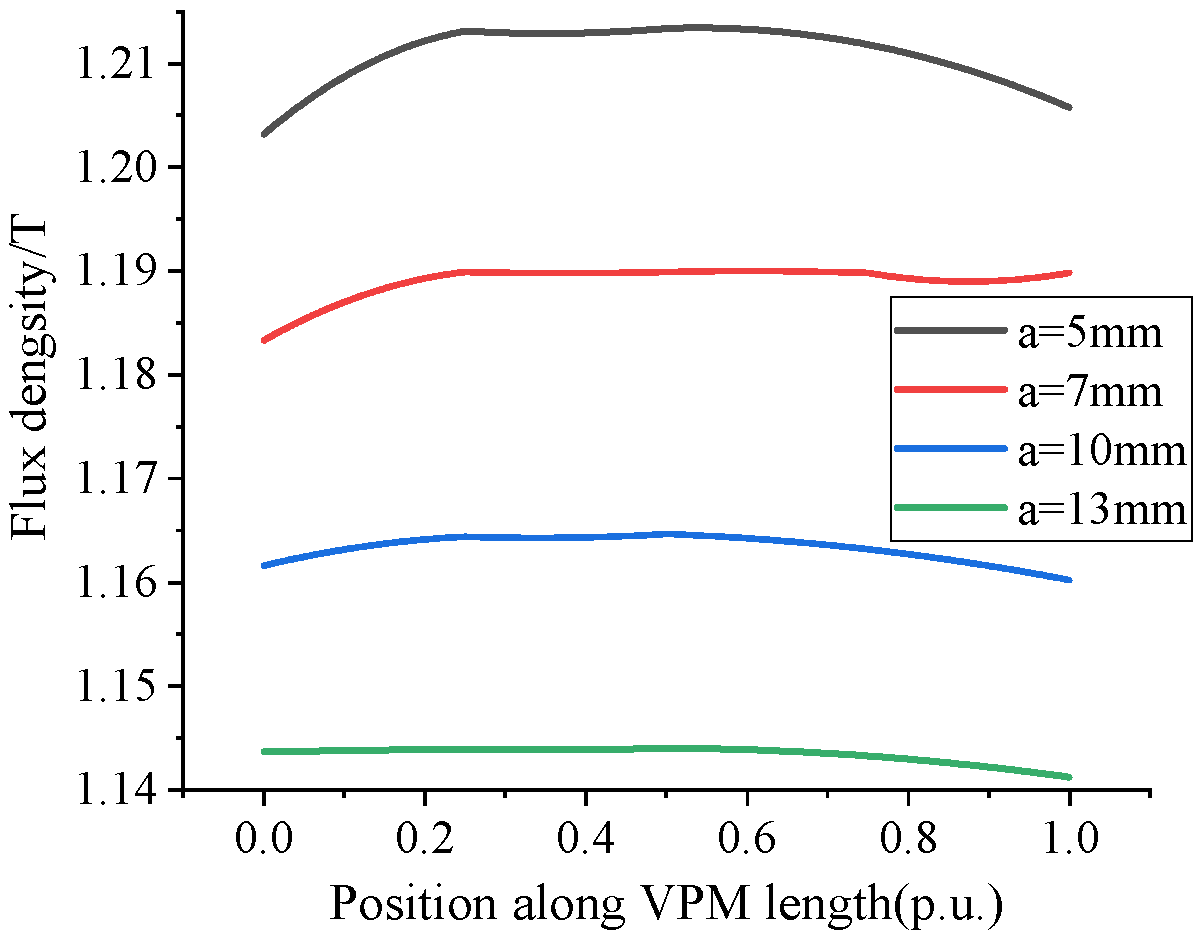
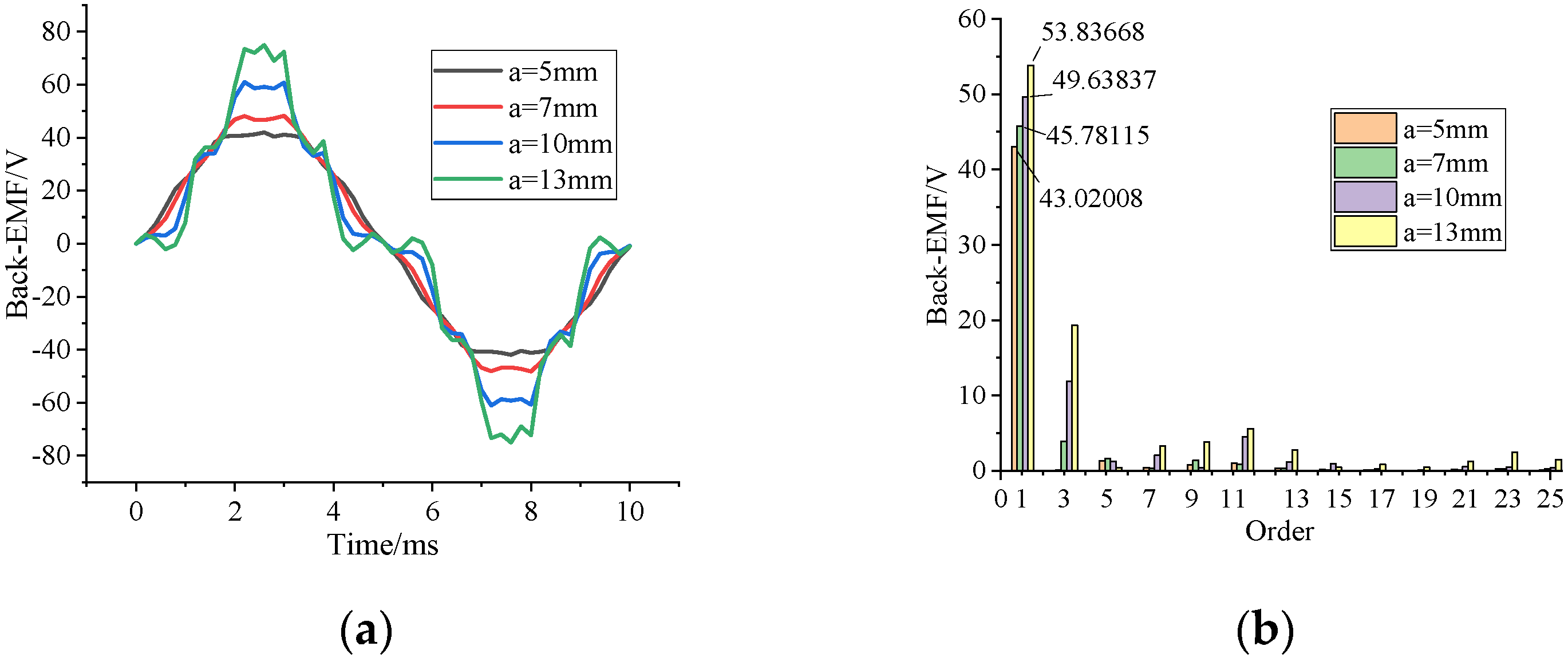
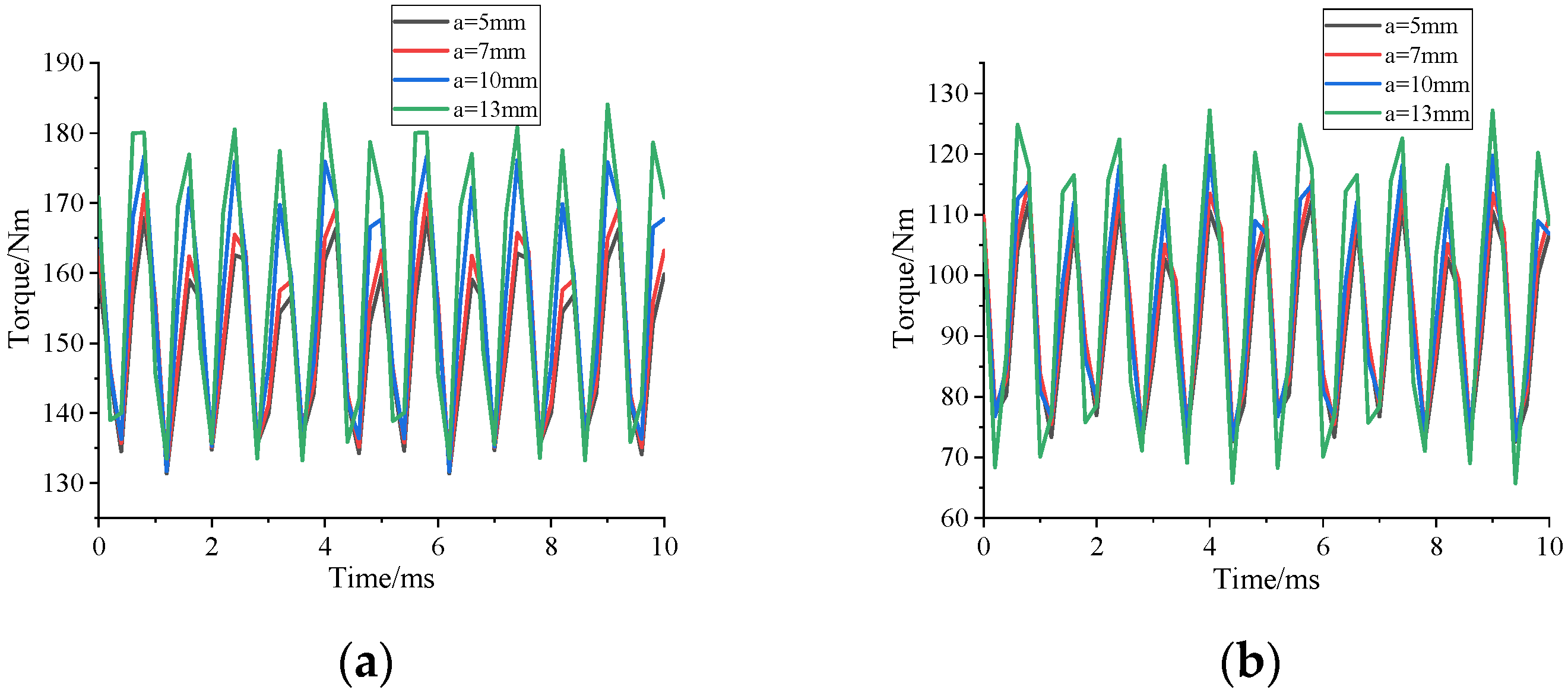
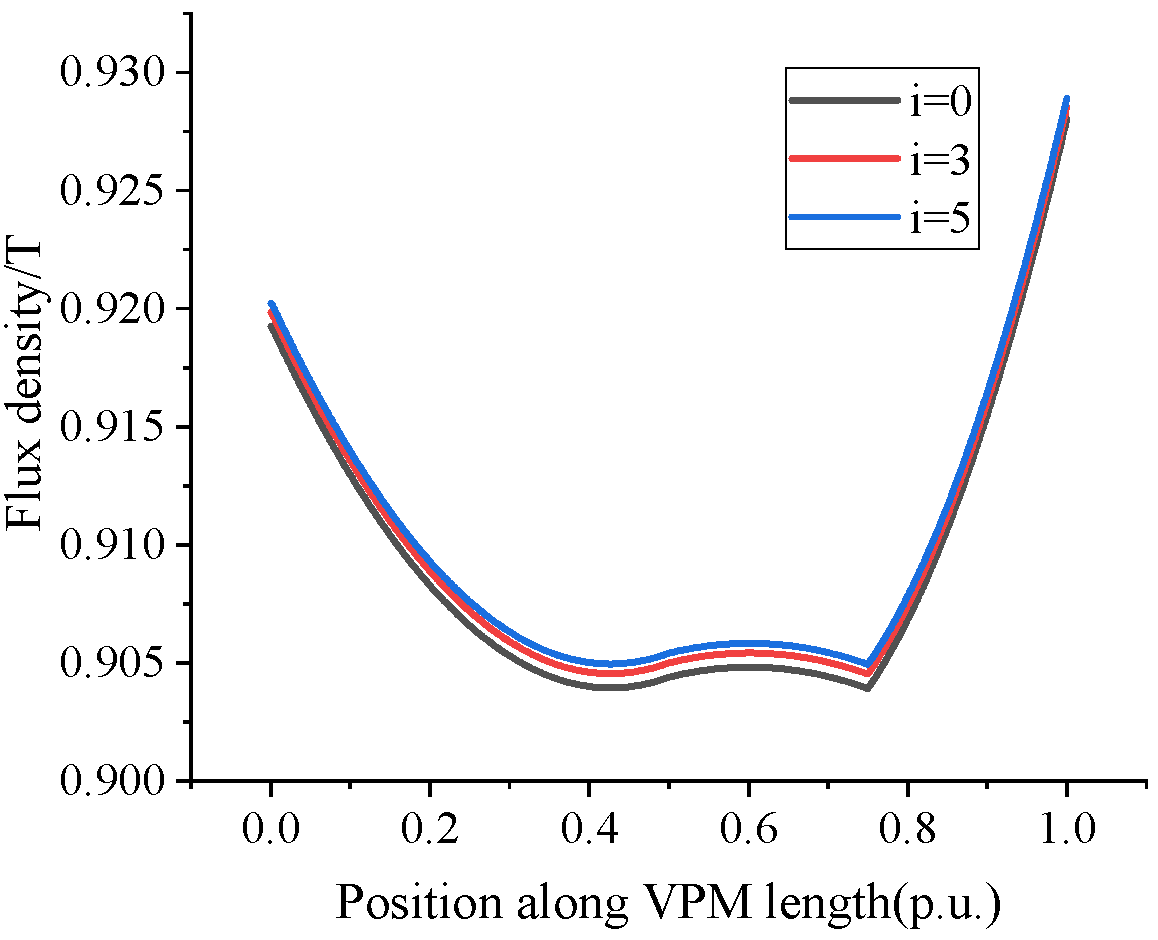
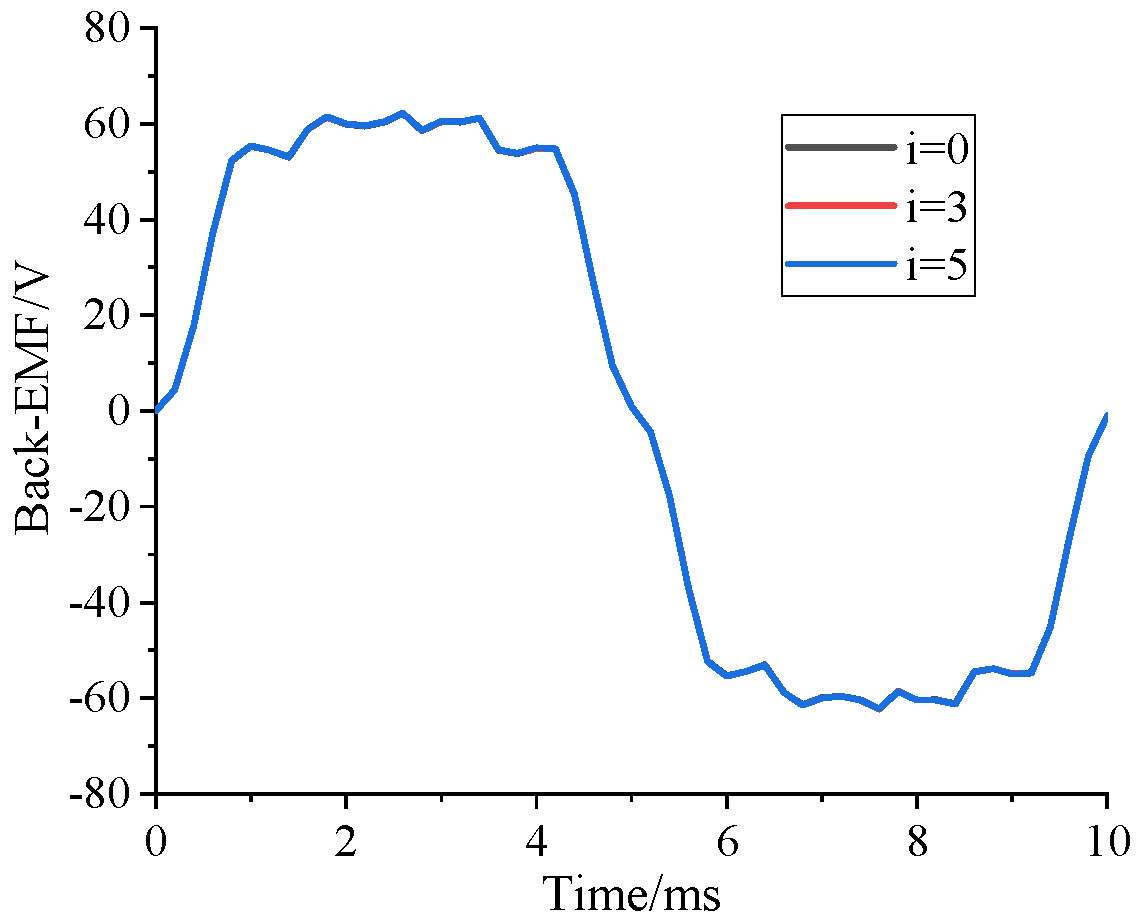

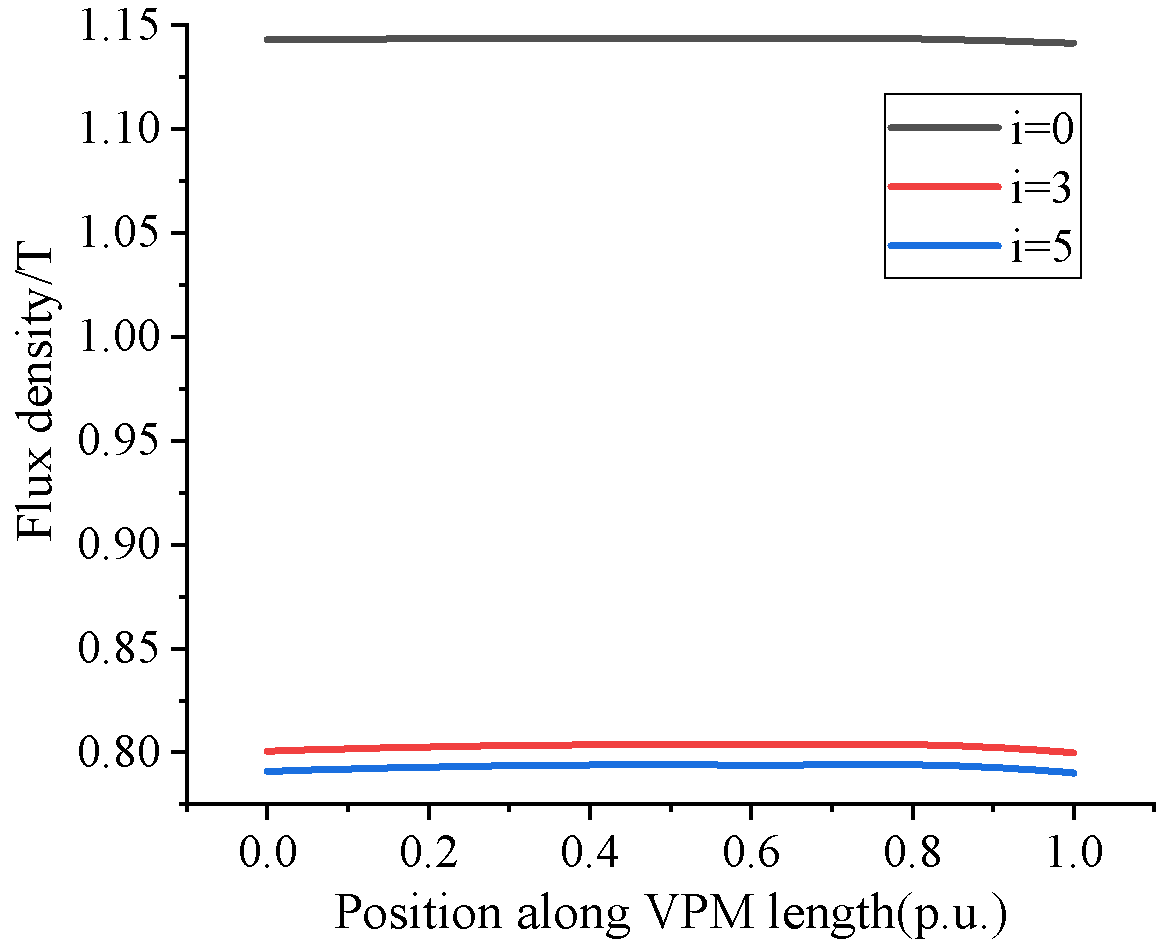
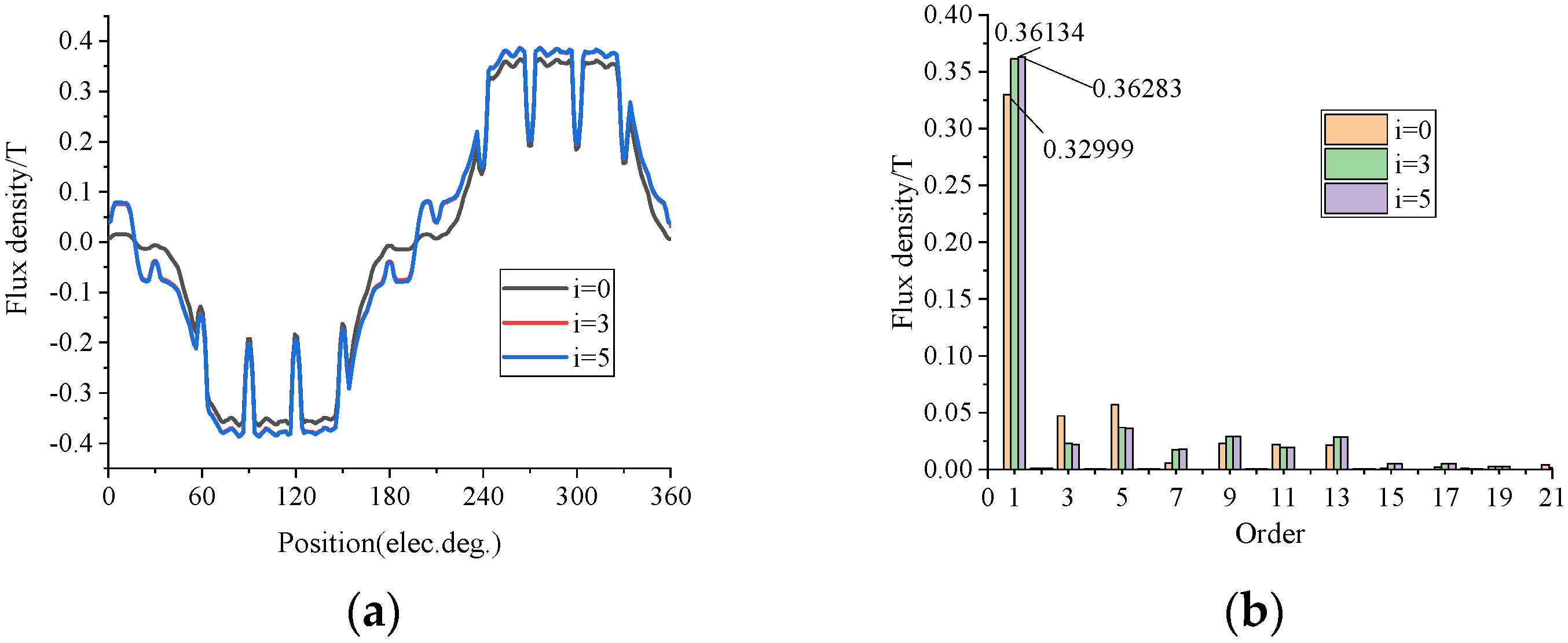
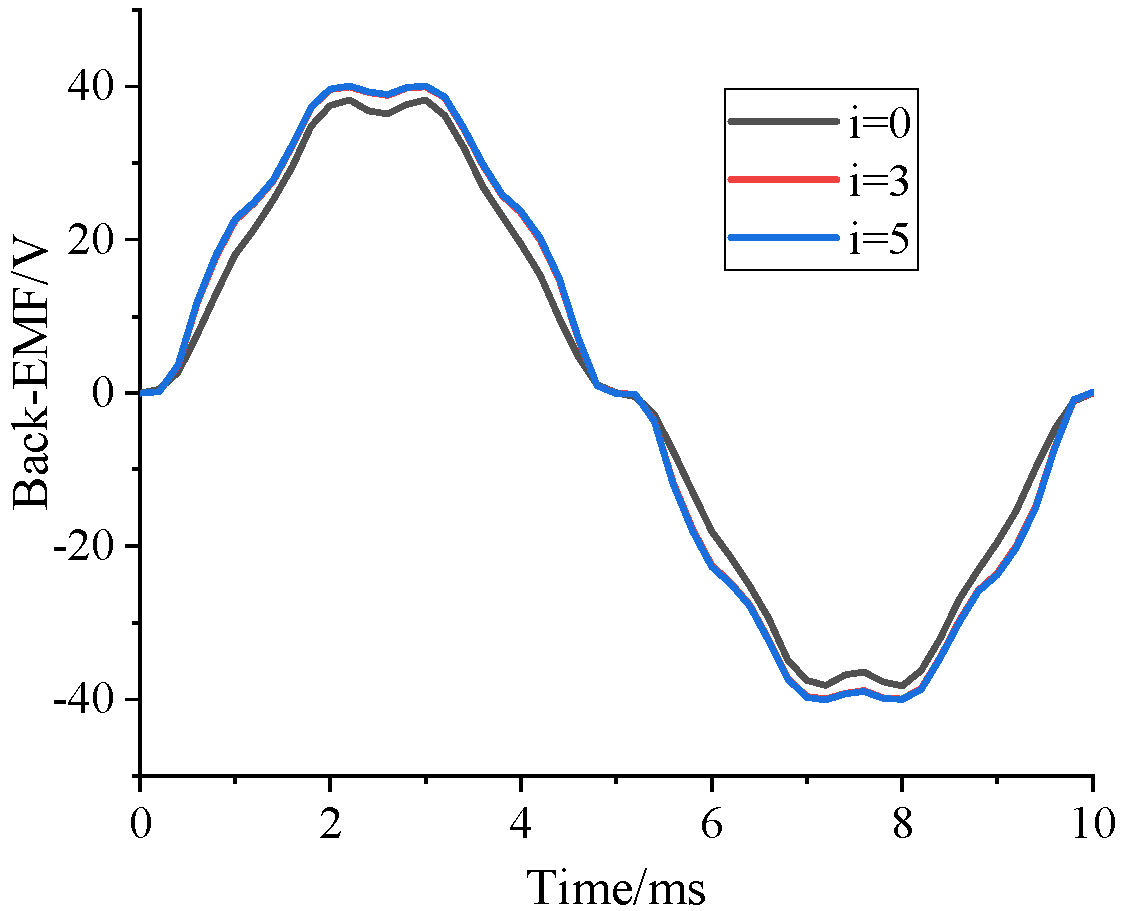
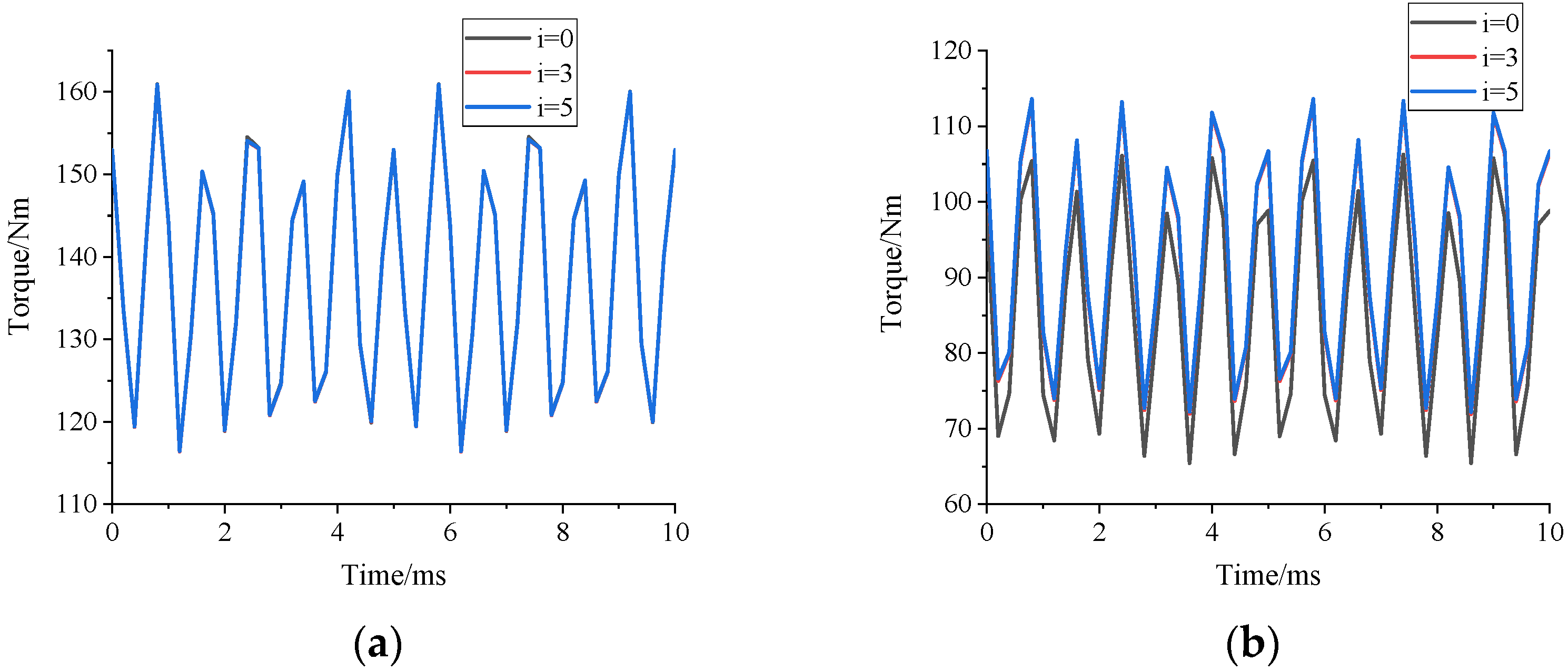
| Parameters | Values | Parameters | Values |
|---|---|---|---|
| Phases number | 3 | CPM thickness (mm) | 6.5 |
| Stator slots/rotor poles | 48/8 | CPM width (mm) | 25 |
| Axial length (mm) | 50.8 | VPM thickness (mm) | 7 |
| Stator outer diameter | 264 | VPM width (mm) | 25 |
| Stator inner diameter | 161.9 | Number of turns per coil | 11 |
| Rotor outer diameter | 160.44 | Air-gap length (mm) | 0.73 |
| Rotor inner diameter | 68 | Rated speed (rpm) | 1500 |
Publisher’s Note: MDPI stays neutral with regard to jurisdictional claims in published maps and institutional affiliations. |
© 2021 by the authors. Licensee MDPI, Basel, Switzerland. This article is an open access article distributed under the terms and conditions of the Creative Commons Attribution (CC BY) license (https://creativecommons.org/licenses/by/4.0/).
Share and Cite
He, X.; Bao, G. Suppression of Cross-Coupling Effect of Hybrid Permanent Magnet Synchronous Motor with Parallel Magnetic Circuit. World Electr. Veh. J. 2022, 13, 11. https://doi.org/10.3390/wevj13010011
He X, Bao G. Suppression of Cross-Coupling Effect of Hybrid Permanent Magnet Synchronous Motor with Parallel Magnetic Circuit. World Electric Vehicle Journal. 2022; 13(1):11. https://doi.org/10.3390/wevj13010011
Chicago/Turabian StyleHe, Xiao, and Guangqing Bao. 2022. "Suppression of Cross-Coupling Effect of Hybrid Permanent Magnet Synchronous Motor with Parallel Magnetic Circuit" World Electric Vehicle Journal 13, no. 1: 11. https://doi.org/10.3390/wevj13010011





